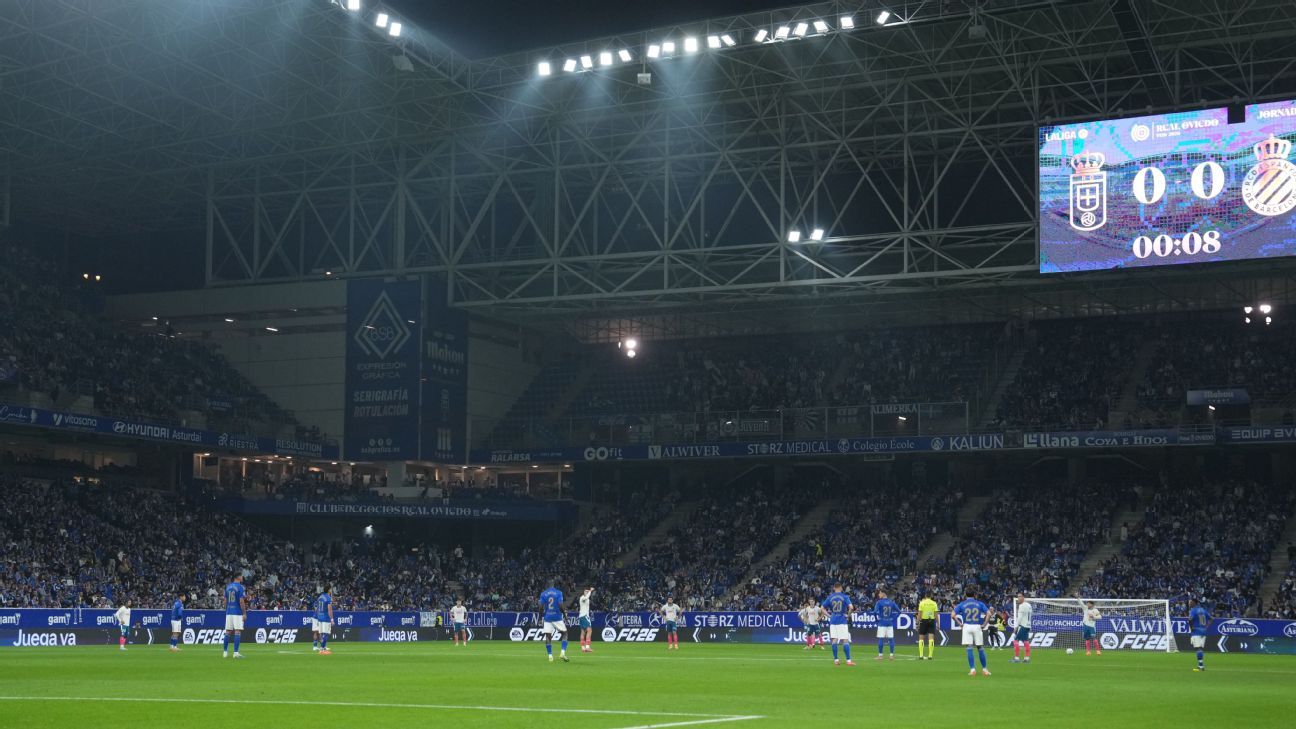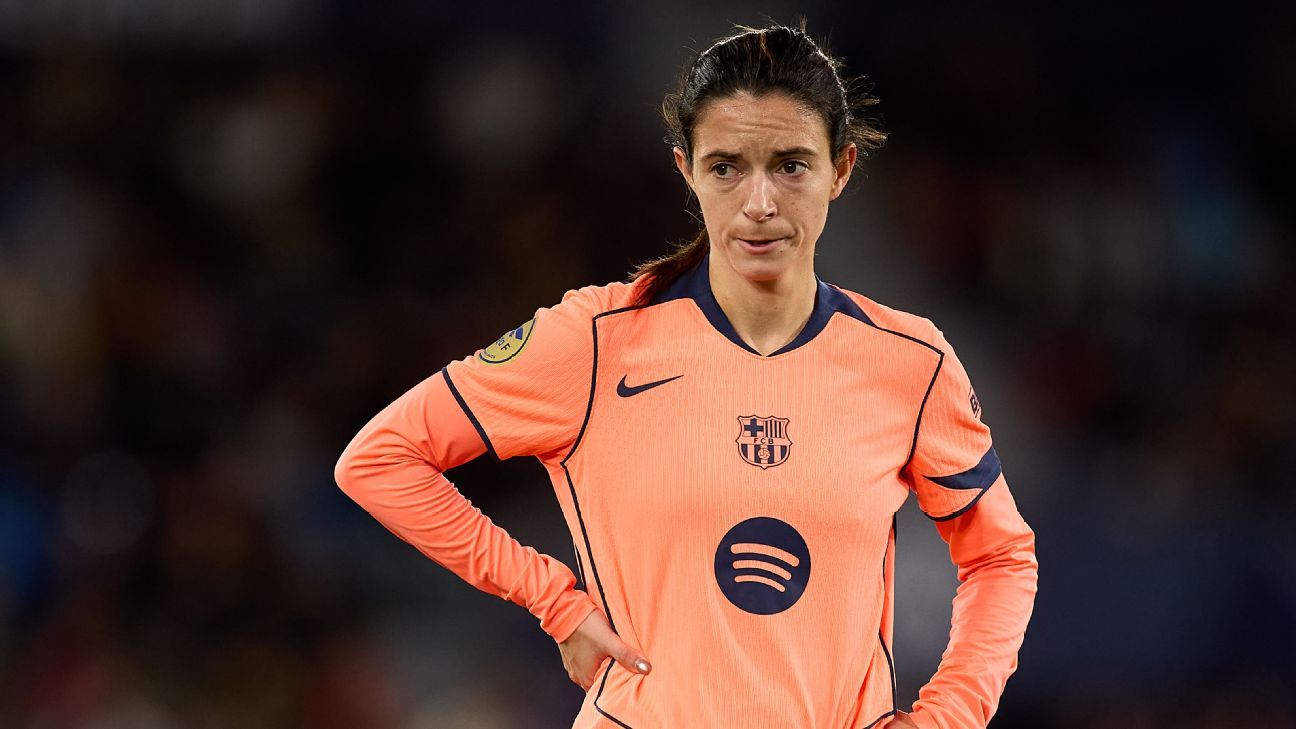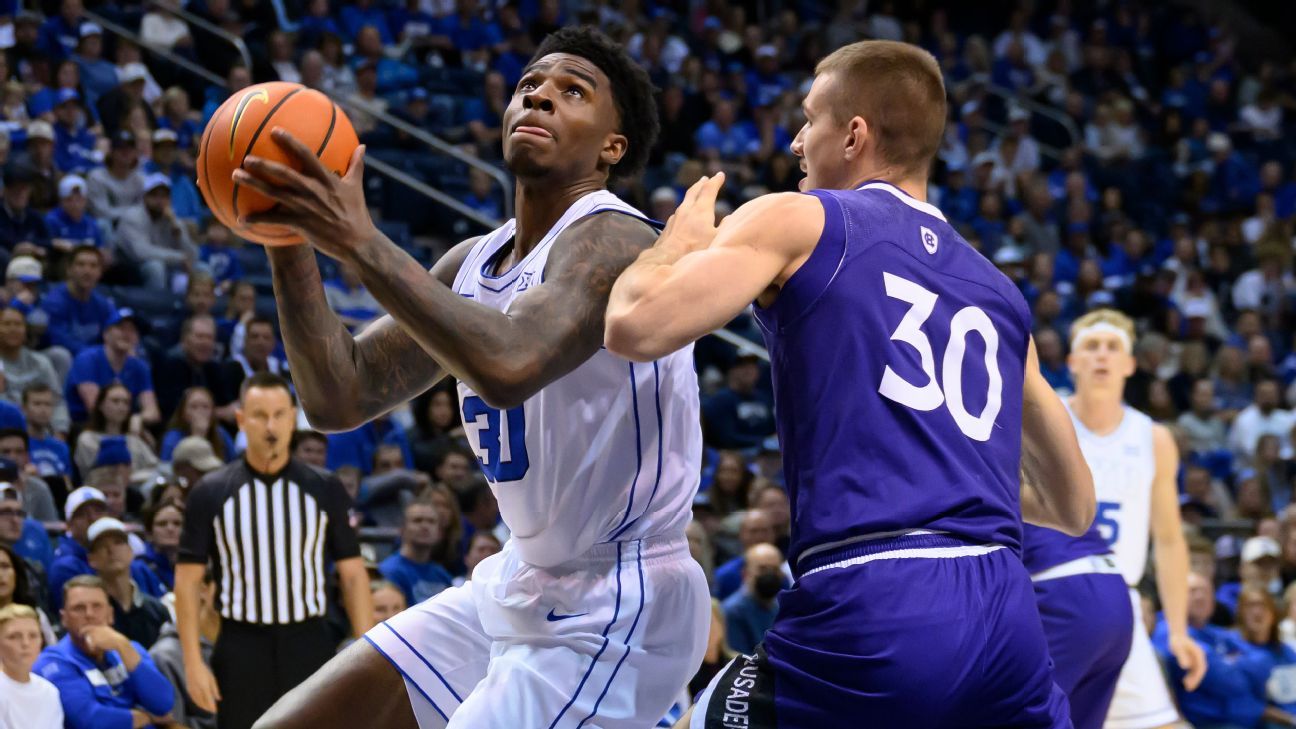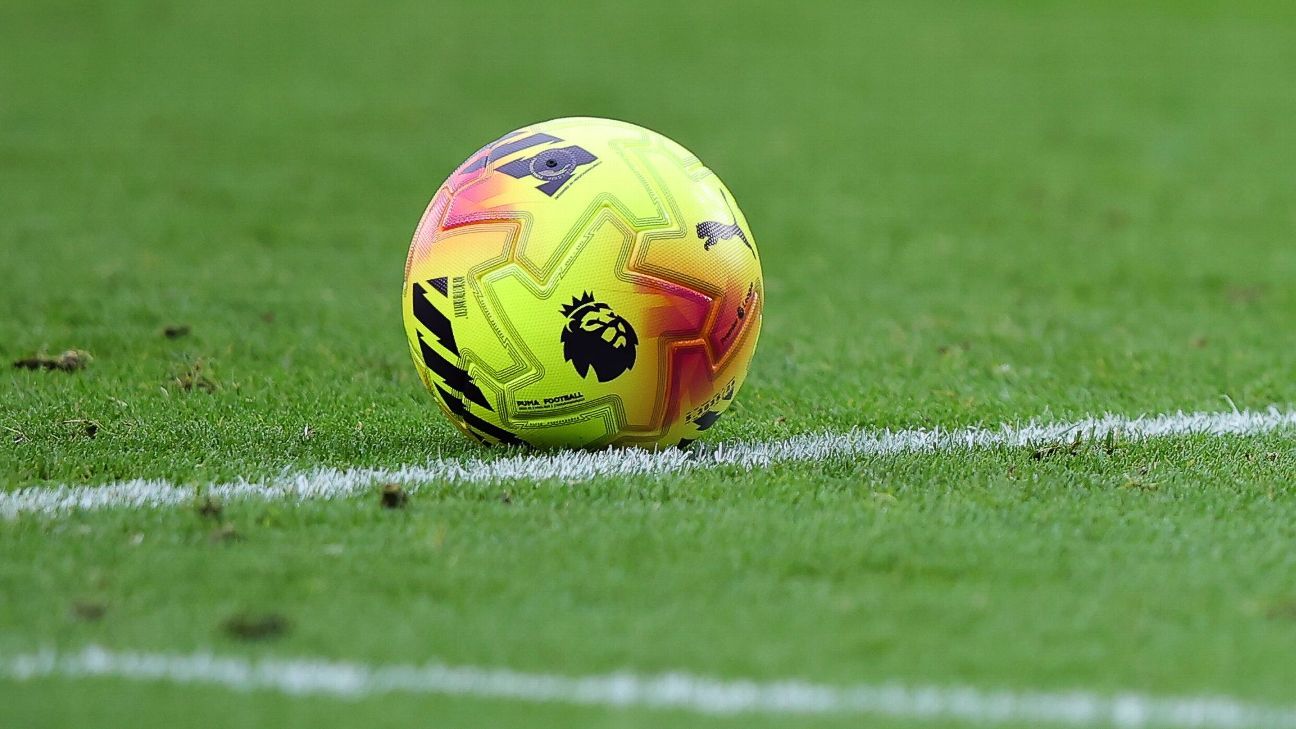Sports
LaLiga players pause game to protest Miami match

LaLiga players launched protests against the league’s decision to stage a regular-season game in Miami, but the first protest on Friday was not shown on live television as expected.
The world television feed of the game at Real Oviedo against Espanyol cut to the exterior of the stadium for the first 25 seconds of the game, when players paused for the opening 15 seconds in opposition of plans to take a game to the United States.
The game came just hours after the Spanish soccer players’ union announced that protests would be held straight after kickoff in games in the ninth round from Friday through Monday.
– Spanish players union against Barça game in U.S.
– Barça in Miami: Why FIFA, UEFA let leagues play overseas
– LaLiga confirms historic Barça league game in U.S.
The players’ union said in a statement that the “players will protest in a symbolic fashion to denounce the lack of transparency, dialogue and coherence of LaLiga regarding the possibility of playing a game in the United States.”
LaLiga made official last week its plans to hold the Barcelona–Villarreal game in Miami on Dec. 20.
The union said the captains of the 20 topflight sides were in agreement with the protest. But the union added that it had not asked the Barcelona and Villarreal players to participate in the protest even though, the union said, “they share the basic premise of the protest.”
Barcelona host Girona and Villarreal host Real Betis on Saturday.
Earlier Friday, Barcelona coach Hansi Flick and his players were not pleased at having to travel 7,200 kilometers (4,500 miles) to play a regular-season game.
“My players are not happy, I am not happy, but LaLiga decided that we will play this game,” Flick said at a news conference in reply to a question about his position on the game.
Barcelona president Joan Laporta has defended the move by saying it represents an opportunity to further push into the American sports market.
But for Flick and his players, it represents added travel before a short winter break. Barcelona will also travel to Saudi Arabia for the Spanish Super Cup starting on Jan. 7.
Barcelona midfielder Frenkie de Jong also criticized playing the game in the U.S., saying players were already overloaded with travel and a packed playing calendar.
Like Barcelona, Villarreal were also playing in the Champions League.
LaLiga president Javier Tebas has defended the game abroad as a key to boosting “revenues in the mid- to long-term” and increasing the value of his competition’s television rights, which lag behind those of England’s Premier League.
Tebas said the league plans to make an international match an annual event.
The match will be at Hard Rock Stadium in Miami Gardens, home of the NFL’s Miami Dolphins.
The league has chartered planes to take to Florida what it estimates will be 2,000 to 3,000 fans from Villarreal, which is the home team.
Sports
Barcelona confirm Bonmatí out for five months after surgery

Barcelona midfielder Aitana Bonmatí will be out for five months after undergoing surgery on a broken leg on Tuesday, the Catalan club have confirmed.
Bonmatí, 27, fractured her fibula in Spain training over the weekend and returned to Barcelona immediately to begin her recovery.
“Bonmatí has undergone successful surgery on a fractured fibula in her left leg,” Barça announced in a short statement on Tuesday.
“The procedure was performed by Dr. Antoni Dalmau at Hospital Barcelona under the supervision of the club’s medical services. The expected recovery time is around five months.”
The three-time Ballon d’Or winner picked up the injury on Sunday as Spain prepared for Tuesday’s UEFA Women’s Nations League final second leg against Germany.
– UWCL talking points: Chelsea’s title chances, PSG’s struggles
– Barcelona in Women’s Champions League: Fixtures, results, news
– Germany’s missed chances open up Nations League final vs. Spain
She had initially wanted to stay with the Spain camp to support the team in their quest to retain the trophy, but was advised to return to Barcelona for treatment.
On Friday, she had played in the first leg in Germany, which ended in a goalless draw.
Bonmatí will now miss the majority of what remains of the club season, although there is a chance she could return for the run in.
The Champions League final, should Barça get there, is scheduled to take place in Oslo on May 22, with the final round of Liga F matches not set to take place until a week later.
The loss of Bonmatí complicates Barça’s options in the middle park, especially in the short-term, with both Patri Guijarro and Kika Nazareth also unlikely to feature again this calendar year due to injuries.
In the meantime, Laia Aleixandri will continue to push up from defence alongside Alexia Putellas, with youngsters Vicky López, Sydney Schertenleib and Clara Serrajordi set to compete for the final place in the middle of the park.
Sports
BYU’s Davis scores 18 in return from 2-game ban

BYU men’s basketball star Kennard Davis returned from a two-game suspension Thursday after a DUI arrest earlier this month, scoring 18 points and adding five rebounds in the Cougars’ 72-62 win over Miami.
The forward played 32 minutes as BYU improved to 5-1 after winning in the Terry’s Chocolate ESPN Events invitational in Florida. Davis, who is averaging 9.0 points and connecting on 50% of his 3-point attempts, hadn’t played since Nov. 8.
Miami fell to 5-2.
He was arrested earlier this month after an accident that preceded his arrest on suspicion of DUI and possession of marijuana. He was treated for minor injuries. In his first court appearance, Davis pleaded not guilty.
The arrest threatened to complicate his career at BYU because the school’s honor code bans the abuse of alcohol and narcotics. A violation of that honor code can result in expulsion.
But Davis, whom BYU coach Kevin Young has called one of the top defenders he has ever coached, was back on the court for a Cougars team that has national title aspirations.
Sports
Ex-England soccer player arrested on suspicion of attempted rape

A former England international soccer player was arrested at Stansted Airport on Sunday on suspicion of attempted rape of a former partner.
ESPN has confirmed the identity of the individual, who cannot be named for legal reasons.
Essex Police confirmed to ESPN that the man has been bailed until “late February 2026” pending further inquiries.
A police spokesperson said in a statement: “A man has been arrested on suspicion of attempted rape and has been bailed to a date in late February 2026 while we continue our enquiries.”
The man was stopped at a passport control point at Stansted, as first reported by The Sun Newspaper. The complaint is believed to have been made by a former partner several weeks ago.
-

 Sports1 week ago
Sports1 week agoWATCH: Ronaldo scores spectacular bicycle kick
-

 Entertainment1 week ago
Entertainment1 week agoWelcome to Derry’ episode 5 delivers shocking twist
-

 Politics1 week ago
Politics1 week agoWashington and Kyiv Stress Any Peace Deal Must Fully Respect Ukraine’s Sovereignty
-

 Business1 week ago
Business1 week agoKey economic data and trends that will shape Rachel Reeves’ Budget
-

 Tech2 days ago
Tech2 days agoGet Your Steps In From Your Home Office With This Walking Pad—On Sale This Week
-

 Politics1 week ago
Politics1 week ago53,000 Sikhs vote in Ottawa Khalistan Referendum amid Carney-Modi trade talks scrutiny
-

 Tech1 week ago
Tech1 week agoWake Up—the Best Black Friday Mattress Sales Are Here
-

 Entertainment2 days ago
Entertainment2 days agoSadie Sink talks about the future of Max in ‘Stranger Things’






